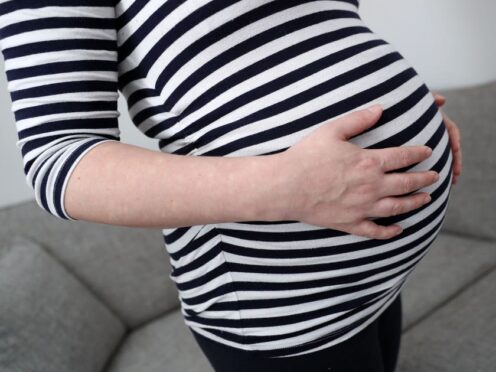
Cases of whooping cough could reach a 40-year high in 2024, experts have warned amid a rapid rise in cases.
The number of cases of whooping cough in England was higher in February than in the whole of 2023.
The bacterial infection, also known as pertussis, affects the lungs and breathing tubes.
Whooping cough can be called the “100-day cough” because of how long it can take to recover from it.
It spreads very easily and can sometimes cause serious problems.
There were 913 laboratory-confirmed cases in England in February, up from 555 in January.
This is compared with the 858 cases for the whole of 2023.
Figures for March will be released by the UK Health Security Agency on Thursday.
Paul Hunter, professor in medicine at the University of East Anglia (UEA), said: “For most adults the whooping cough is not life threatening, though can be very unpleasant.
“This is a chronic repeated bout of coughing which can be so bad that people feel it a struggle to breathe in again.
Whooping cough (pertussis) cases are currently very high, & the disease can be life-threatening for newborn babies.
If you're pregnant, it's important to take up the #Pertussis vaccine when offered. It helps protect your baby in their first weeks of life https://t.co/psHCZoBTLq pic.twitter.com/jYM60OKR2f
— UK Health Security Agency (@UKHSA) May 7, 2024
“It used to be much more common in the last century up until the vaccine was introduced.
“However, this current year looks like we may see more cases than we have seen in any of the last 40 years.”
Prof Hunter said that a number of factors could be behind the rise in cases, including: a drop in vaccine uptake; reduced “population immunity” due to a fall in cases linked to social distancing measures during the pandemic; and a “scare over vaccines” in the early 2000s which led to a group of people aged around 21 who did not complete their vaccination.
He added: “The infection can affect anyone who is not vaccinated and even some that are.
“However, the main risk of death or severe long-term complications is seen in young children, especially those under three months old.
“It is this age group that are most at risk of death and developing longer-term problems such as brain damage.
“The problem is that this age group is too young for the vaccine in most circumstances.
“That is why we offer vaccine to pregnant women. Not to protect them but to protect their babies during the riskiest first months of life.
“Vaccine uptake in pregnant women has been falling quite markedly in recent years.”
Of the 1,468 cases confirmed between January and February 2024, around half were in those aged 15 years or older and 30% were in children aged between 10 and 14 years.
During the first two months of the year there were 52 confirmed cases among babies under the age of three months – who are at highest risk of serious complications.
Dr Michael Head, senior research fellow in global health at the University of Southampton, said: “A drop in vaccination coverage will be a key factor contributing to this rise in cases of whooping cough.
“It’s vital that vulnerable groups such as babies and pregnant women are up to date with their recommended immunisations, and that includes the pertussis vaccine.
“Whooping cough can be a very severe infection, potentially fatal to babies who become infected.
“Outbreaks can occur in cycles, so we tend to see these rises in cases every few years.
“The reasons for that are not fully understood, but population-level waning immunity is likely to contribute to that, hence why a high coverage of vaccination is so important.
Whooping cough can be very serious for young babies.
🤰 If you’re pregnant, you can help protect your baby by getting vaccinated, ideally from 16 weeks up to 32 weeks pregnant.
🗨️ Speak to your midwife or GP team.
➡️ Visit the NHS website to learn more: https://t.co/eTJMpA1pto pic.twitter.com/f989oXQqQw
— NHS Birmingham and Solihull (@NHSBSol) May 7, 2024
“As a disease, whooping cough is as infectious as measles, and more infectious than Covid-19.
“This is in part due to a long period where the infected individual can be infectious, i.e. able to transmit the bacteria on to others.
“Thus, with a larger pool of susceptible people, there is increased likelihood of an outbreak being sustained.”
The NHS recommends all pregnant women are vaccinated against whooping cough between 16 and 32 weeks.
Immunity from the jab passes through the placenta to protect newborn babies in their first weeks of life.
When a baby is eight weeks old they are offered the six-in-one vaccine, which includes immunisation against whooping cough.
The second dose of the vaccine is offered at 12 weeks and the third is offered at 16 weeks.
When children are three years and four months they will be offered the four-in-one pre-school booster, which protects against pertussis.

Enjoy the convenience of having The Sunday Post delivered as a digital ePaper straight to your smartphone, tablet or computer.
Subscribe for only £5.49 a month and enjoy all the benefits of the printed paper as a digital replica.
Subscribe